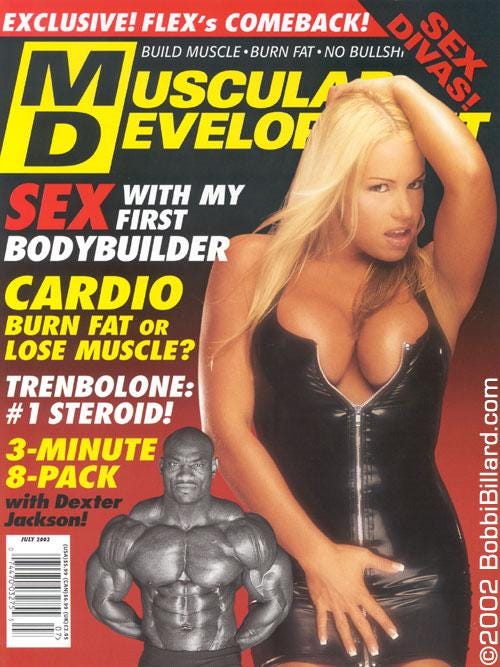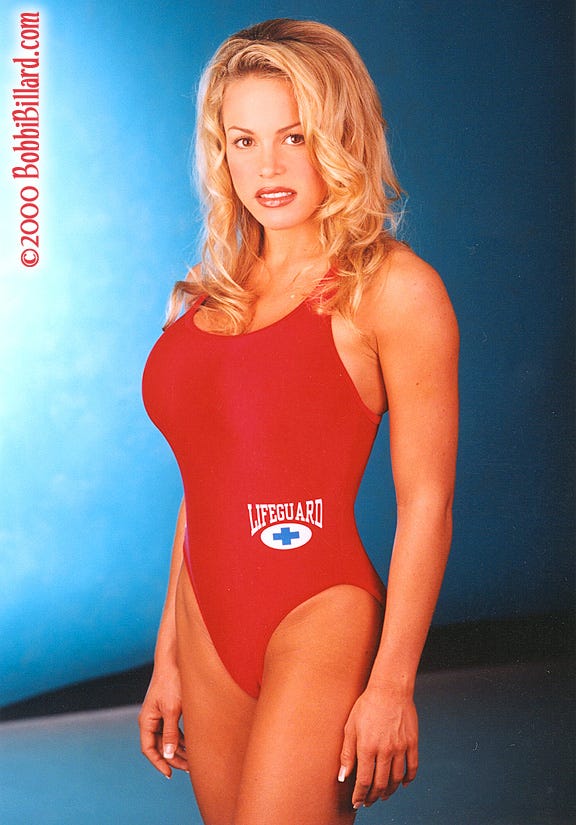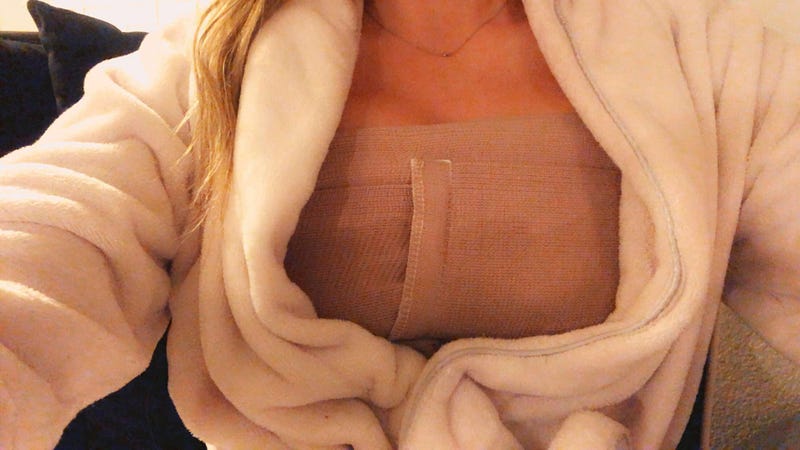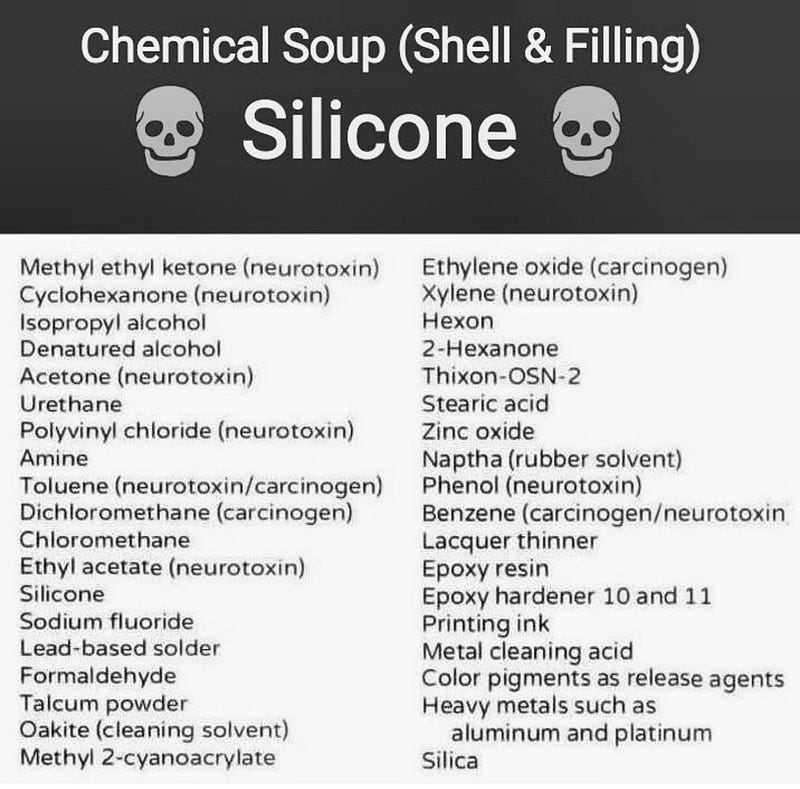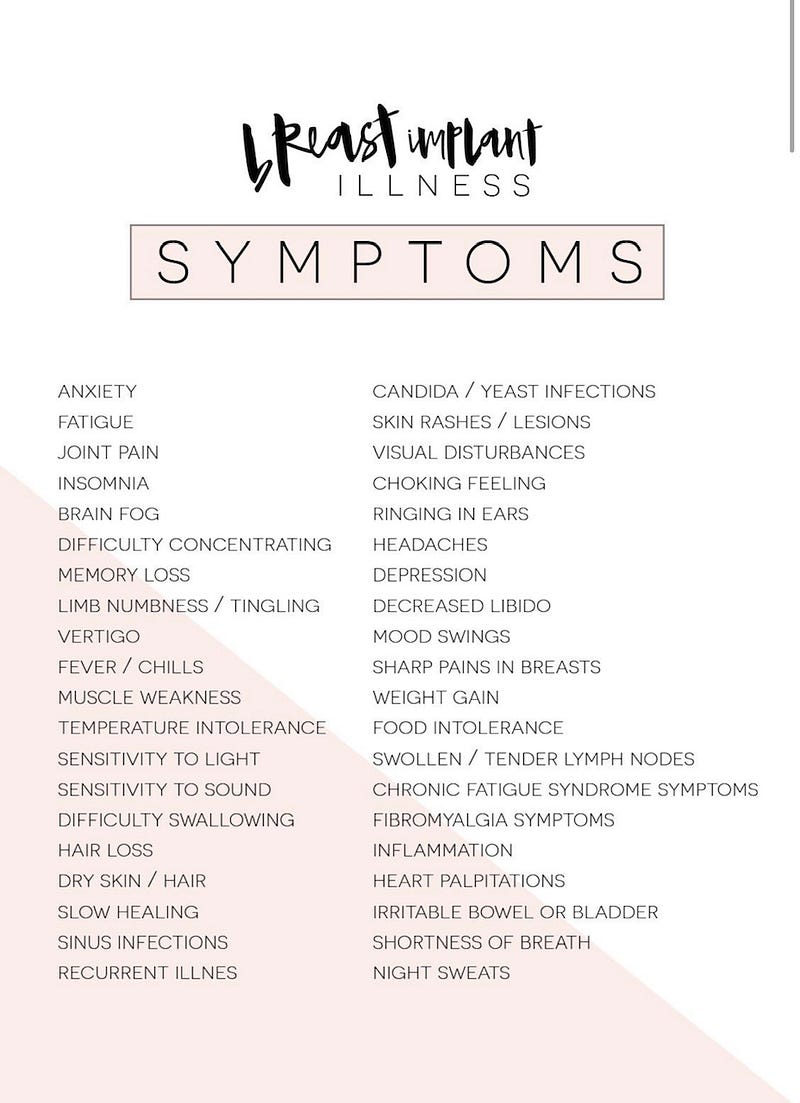Bobbi Billard - Augmented Reality... The Truth About Breast Implants and Breast Implant Illness
Bobbi Billard… Now New & Improved + Breast Implant Free © Roger Talley (https://lvphotog.com/)
My name is Bobbi Billard. I am an Interior Designer, Model and Actress. You may have just read about me in the recent international press about my decision to explant my breast implants featured on Fox News, The Sun, The Daily Mail, and more than 50 international news websites.
Model's boobs swell up as body begins 'forcing her 9th breast implants out of her chest'
www.thesun.co.uk
www.thesun.co.uk
I was born in Austin, Texas, spent most of my childhood growing up in Southern California (Orange County), and currently reside in Las Vegas, Nevada.
https://en.wikipedia.org/wiki/Bobbi_Billard
http://www.instagram.com/bobbibillard
http://www.twitter.com/bobbibillard
http://www.facebook.com/bobbibillardfans
For more than 20 years, the method at which I made money required me to look a certain way. By no means am I complaining, as my career has afforded me the ability to make a good living, buy real estate, invest and save for my retirement but unfortunately, this has come at a cost.
http://www.instagram.com/bobbibillard
http://www.twitter.com/bobbibillard
http://www.facebook.com/bobbibillardfans
For more than 20 years, the method at which I made money required me to look a certain way. By no means am I complaining, as my career has afforded me the ability to make a good living, buy real estate, invest and save for my retirement but unfortunately, this has come at a cost.
Ever since I was a young girl, I always knew that I wanted to model. At the age of four, I was already striking poses and hamming it up for the camera.
For much of my childhood I was bullied and it had a traumatic impact on me. The ‘mean girls’ had a great desire to tear me down, which resulted in me feeling as though there was something wrong with me and that I was inferior.
At a young age I was called names like ‘bullet boobs” and “monkey lips” and unfortunately, in the late 80’s and early 90’s, it wasn’t the time that natural, big lips were in fashion. In short, I never really felt that I fit in. My mom would tell me not to worry and that my full lips would one day be on the cover of magazines. Little did she realize her words would be quite prophetic.
At a young age I was called names like ‘bullet boobs” and “monkey lips” and unfortunately, in the late 80’s and early 90’s, it wasn’t the time that natural, big lips were in fashion. In short, I never really felt that I fit in. My mom would tell me not to worry and that my full lips would one day be on the cover of magazines. Little did she realize her words would be quite prophetic.
I started modeling at the age of 12. My parents thought that maybe modeling school would improve my self-esteem. When you are teased so much, sometimes you start to believe the insults because so much of your self image comes from the feedback that you receive from others. If all you hear is negative, then you start to think something is wrong with you. The camera was the perfect outlet for me. I was an outcast amongst the kids at school but the camera loved me and success was my best revenge, motivating me to do something positive.
In 1993, I was 18 years of age, and people like Pamela Anderson were the icons of the day. I decided I would take control of my adulthood, prove the naysayers wrong and take the modeling world by storm.
I underwent what would become my first of nine breast augmentations in one breast and ten in the other (due to a seroma complication). With the exception of my first procedure, every time I had surgery, I developed capsular contracture in only of my breast implants, causing asymmetry. This happened consistently within a year or two of each of my surgeries. While this might sound crazy to some, this is commonplace to many women who get breast augmentation surgery (which has been acknowledged by the FDA).
I went on to appear in publications such as Playboy, Esquire, Muscular
Development, Muscle Mag, and FHM to name a few. I was in a Super Bowl commercial for Diet Dr. Pepper, had a brief stint as a professional wrestler for WOW Women of Wrestling and WWE (World Wrestling Entertainment) and featured television, music video and movie roles.
Development, Muscle Mag, and FHM to name a few. I was in a Super Bowl commercial for Diet Dr. Pepper, had a brief stint as a professional wrestler for WOW Women of Wrestling and WWE (World Wrestling Entertainment) and featured television, music video and movie roles.
As I reflect back to this time, it seems obvious that I should have taken my implants out, based on all of the ongoing complications. However, the reality was, I didn’t because I made my living based upon how I looked. So I kept getting augmentations, which equated to slapping a band-aid on this recurring problem. I finally got to a point where my body couldn’t take it anymore.
My issues began late last summer when I started to suspect something was wrong with one of my breast implants because it was red and felt warm to the touch. I visited my doctor who ordered blood tests. Unfortunately, that did not yield any substantive answers and I was told my blood work was “the healthiest they’d seen in the past month”.
Regardless of receiving this bill of good health, deep down inside, I knew something was wrong. I am very in tune with my body and something did not feel right. I continued to go about my normal day to day activities, hoping that whatever was going on would resolve itself. I did not feel ill or have pain but this mystery infection or auto immune response that I was experiencing was about to kick things up a notch, to a point where nobody could deny that something was indeed very wrong.
Fast forward to January, I began noticing that there was even more prominent redness than before. My breast was again warm to the touch and now there was swelling. It appeared as if this infection/immune response was trying to force my implant out through my skin along my scar line. I went back to my doctor who now acknowledged what I was trying to show him previously and prescribed an antibiotic.
Figuring that I was going to need yet another surgery to fix my breasts, I consulted one of the top revision plastic surgeons who told me that the antibiotic I was prescribed would not fix my problem and instead, my left breast needed to be drained immediately and the implants needed to come out. I scheduled to have my implants removed at their next soonest availability the following week.
Upon draining my breast, the surgeon said my implant was sitting against my skin and he was lucky he didn’t cut my implant open when he cut me because there wasn’t any tissue protecting it. He sewed me up but somehow my suture re-opened again the following day. I was then left with what looked like a gunshot wound.
Four days away from my explant surgery, I put on a breathable waterproof bandage so that I could take a shower and not have to worry about keeping my wound dry since my implant was exposed. I continued to leave the bandage on for two days, while I waited to explant, but then I started to feel really ill. I felt like I had a fever and was nauseous. I couldn’t eat. My heart was racing and I was getting the chills. I felt weak and exhausted. Whatever this mystery infection was, it did not like being sealed up. I removed the bandage to see what was going on and yellow colored liquid came spilling out. I continued to feel awful until the day before my surgery. I still don’t know what the infection is/was. The blood work for anaerobic and aerobic bacteria has come back as “no-growth” twice without any specificity relating to the infection.
Through a friend, who was having problems with her breast implants and ended up having surgery to remove them, I was invited into a support group on Facebook called Breast Implant Illness and Healing by Nicole — with 70,000 members experiencing the same physical and emotional toll, I don’t feel so alone.
It was there that I learned many women were having various health problems with their breast implants and “explanting” was touted as one of the best ways to solve issues that your implants may be causing you. Through the group, I learned that it was best to request an enbloc capsulectomy to prevent silicone, other chemicals, and bacteria from leaking into your body during surgery so I asked my surgeon to perform an enbloc. I wanted everything out of my body that could potentially harm me.
On February 1st, 2019, I underwent surgery to explant my breast implants. This meant removing my Mentor Memory Gel 650cc silicone (gummy bear) implants. In a few short hours I went from a DD to a B cup. My surgeon performed the Enbloc procedure to my encapsulated breast, but my surgeon could not do anything to the mystery infection breast because I was told it was “mush” inside there. A subtotal capsulectomy was performed on that side instead.
While the recovery and plan to rejuvenate my breasts is a work in progress, for the first time in 43 years of age, I am happier, wiser and on the road to being the healthiest I have ever been. It is important to note that even after my bad experience with breast augmentation surgery, I am not against breast implants or plastic surgery, as long as it is done after being fully informed about the risks of what one is taking on.
I believe the FDA should be focused on four areas to help women here and now:
1) implant degradation information
2) technology solutions
3) allergy testing
4) risks and signs of ALCL cancer
2) technology solutions
3) allergy testing
4) risks and signs of ALCL cancer
Unfortunately, I don’t think women are being told about the potential dangers of getting implants. Women should be warned that implants degrade over time and because of that, breast surgery requires maintenance at least every ten years to replace them. Therefore, having implants is more like a lifestyle. You can compare it to car ownership. Sure you could purchase, not do any maintenance, and it could very well last you a long time before it inevitably falls apart. But if you’re not regularly looking under the hood, you may oblivious to what’s going on inside there. If you’re willing to sign on for all the maintenance that having breast implants entails, then more power to you.
Just be informed that the United States Food and Drug Administration (FDA) recommends breast implant recipients receive MRI screening for silent rupture 3 years after receiving your implants and every 2 years after that. I cannot recall one plastic surgeon telling me this in any of my 9 total breast augmentation surgeries — nor was a post card or email reminder ever sent, like when you have a future appointment. Since surgeons aren’t commonly doing this, you need to take an active role in keeping track of the status of these devices you are placing inside your body. Also, be aware that it doesn’t necessarily take an implant to rupture in order for it to cause problems (gel bleed).
With many new breast implant manufacturers integrating and having plans to integrate RFID chips inside the implants, it seems incredulous that these devices have not developed technology that can warn if a rupture has occurred. If pacemakers can communicate device problems to the outside world, then why haven’t the breast implant makers adopted similar technology?
Also, patients should be informed and warned that chemicals and neurotoxins are used to make breast implants and people could be allergic to these ingredients. Women need to understand this and decide if they still want implants put into their body. Allergy testing could be a smart protocol the FDA imposes on all medical professionals who conduct this procedure.
Lastly, and perhaps most importantly, women should also be warned about the signs and potential to get BIA-ALCL which is a rare form of cancer of your immune system that is found in women with implants.
On February 7, 2019, the FDA reported 457 additional cases of cancer linked to breast implants and issued a warning letter to those in the medical field of the association between breast implants and anaplastic large cell lymphoma. Over time, a fibrous scar called a capsule develops around the implant, separating it from the rest of the breast. In patients with breast implants, reported cases of BIA-ALCL were found adjacent to the implant itself and contained within the fibrous capsule.
I still have not learned what my condition was or what caused it. As a result we do not know if the antibiotics I was prescribed were ones that could fight whatever this unknown mystery infection or immune response is. I still have an open hole in one of my breasts and fluid continues to come out of that hole. In my other breast, I’ve been dealing with a repeated seroma complication.
As I begin to heal, I continue to research more and more about breast implant illness. The medical community (specifically those associated with a financial benefit from implant procedures), consistently deny any connection to an illness or even cancer (even if it is a rare few). Instead, much to my dismay, women are labeled by doctors as crazy and being told its all in their head.
As I begin to heal, I continue to research more and more about breast implant illness. The medical community (specifically those associated with a financial benefit from implant procedures), consistently deny any connection to an illness or even cancer (even if it is a rare few). Instead, much to my dismay, women are labeled by doctors as crazy and being told its all in their head.
It’s important to point out that the plastic surgeon I had chosen to explant does not believe in breast implant illness either. They too believe it’s all in people’s mind. Yet, there isn’t a clear explanation as to what caused this in me. Even with a growing number of studies that are in direct contrast to this, most plastic surgeons continue to vehemently deny (when asked) if breast implants break down, do not think they represent toxicity to ones body and won’t admit
that breast implant illness or any illness associated exists. It seems as the implant manufacturers and some plastic surgeons who perform breast augmentation surgeries are as protective as tobacco companies once were about the danger of cigarettes.
that breast implant illness or any illness associated exists. It seems as the implant manufacturers and some plastic surgeons who perform breast augmentation surgeries are as protective as tobacco companies once were about the danger of cigarettes.
I’m perplexed by denials that implants can cause problems in a small portion of women. Scientists claim that our plastic water bottles can leach chemicals into water, then I don’t think it’s that much of a stretch that implants can do the same inside our bodies (gel bleed). You are putting a foreign, chemically laden, object inside your body right next to your heart and lungs. What could possibly go wrong?
Some of the Breast Implant Illness (BII) symptoms I had experienced prior to explanting include headaches, lack of energy (always tired), dark circles and burning, itching eyes, chronic neck and back pain, joint pain, brain fog, memory loss, anxiety, hair loss/thinning, thinning of breast tissue and skin, unexplained weight gain, light sensitivity, oral thrush, hormone imbalances,
clogged Eustachian tube (only my right ear), and nipple discharge.
clogged Eustachian tube (only my right ear), and nipple discharge.
The first thing I noticed after my explant is that my back and neck pain was instantly better. I felt much lighter on my feet without having the weight of the implants to carry around all the time. As far as my breast implant illness symptoms being resolved, I haven’t had any headaches and I feel like I have more energy. My eyes don’t itch or burn as much. I feel as if I’m thinking more
clearly. I am hopeful the rest of the symptoms on my list resolve themselves over time.
clearly. I am hopeful the rest of the symptoms on my list resolve themselves over time.
I wanted to share my story in the hopes that it may help someone. If I’m able to help one person, it will be worth it. Perhaps someone considering getting breast implants will reconsider, or someone who has been feeling sick, that hadn’t heard of this before, will finally learn about the possibility that they may be experiencing breast implant illness.
I’m not going to lie, my breasts do not look pretty compared to a lot of the after pics I have seen. Right now they resemble shriveled raisins. If not for my sense of humor and support system, I could easily have become seriously depressed. Up until this event, so much of my life had me feeling like my breasts defined me to some extent. I have gone from a Playboy model to my new “less is more” look, which I am learning to love and embrace. I have successfully surprised all of my friends and loved ones on my immediate support team with how well I have been taking things. Right now it’s all about my health, healing and recovery. Part of my journey has taken me to realize that a body part doesn’t define me. My actions define me.
Finally, I am not the person who believes implants should be made illegal or taken off the market. As part of my road and path to recovery, I have not ruled out fat transfer or a lift in the future.
On March 25–26, 2019, the FDA plans to convene a meeting to discuss the benefit-risks involving breast implants. I am hopeful that FDA will recognize previous reports from their agency and the World Health Organization and will take some actions. More independent studies, that aren’t funded by manufacturers of implants, that track women who are experiencing these breast implant illness symptoms should be done. The fact is a significant
percentage of people who have had breast augmentations are not only getting a rare form of cancer, but, an increasing number of people who have had breast augmentations are experiencing unexplainable illnesses’ that the medical community has largely rebuffed as psychological.
percentage of people who have had breast augmentations are not only getting a rare form of cancer, but, an increasing number of people who have had breast augmentations are experiencing unexplainable illnesses’ that the medical community has largely rebuffed as psychological.
https://www.fda.gov/medicaldevices/productsandmedicalprocedures/implantsandprosthetics/breastimplants/default.htm
https://www.nbcnews.com/health/health-news/doctors-patients-raise-alarms-about-cancer-linked-breast-implants-n940181
http://fortune.com/2018/11/27/fda-breast-implants-alcl-rare-cancer-lymphoma/
http://www.bloodjournal.org/content/127/20/2375
https://www.nbcnews.com/health/health-news/doctors-patients-raise-alarms-about-cancer-linked-breast-implants-n940181
http://fortune.com/2018/11/27/fda-breast-implants-alcl-rare-cancer-lymphoma/
http://www.bloodjournal.org/content/127/20/2375
Moving forward, I plan to use my platform to bring awareness and help people find solutions. The more people that come forward and speak out about this will make it easier for many women who live in the shadows of what is sadly considered to be a psychological issue in their head.
Additional Source Data
Feb 7, 2019- FDA reports additional cases of cancer linked to breast implants
Feb 6, 2019- Doctors Launch Task Force Into Breast Implant Illness
https://apple.news/AhUQabqt4QAGscUOdwAtOtw
Sept 2019- Largest-Ever Study Shows Silicone Breast Implants Associated with Rare Diseases
https://www.mdanderson.org/newsroom/largest-ever-study-shows-silicone-breast-implants-associated-with-rare-diseases.h00-159227301.html
Nov 2018-The A, B and C’s of Silicone Breast Implants: Anaplastic Large Cell Lymphoma, Biofilm and Capsular Contracture
https://www.ncbi.nlm.nih.gov/pmc/articles/PMC6316940/
Oct 2018- Silicone Breast Implants Linked to Number of Complications, but FDA Critical of Study
https://www.breastcancer.org/research-news/silicone-implants-linked-to-complications
Pilot Study of Association of Bacteria on Breast Implants with Capsular Contracture
https://www.ncbi.nlm.nih.gov/pmc/articles/PMC2681843/
Video Testimony Jae Chun to FDA- Sept 9, 2018
https://www.youtube.com/watch?v=QowrmaDy4uA&feature=youtu.be
Breast Implant Illnesss- February 1, 2018
Feb 7, 2019- FDA reports additional cases of cancer linked to breast implants
Feb 6, 2019- Doctors Launch Task Force Into Breast Implant Illness
https://apple.news/AhUQabqt4QAGscUOdwAtOtw
Sept 2019- Largest-Ever Study Shows Silicone Breast Implants Associated with Rare Diseases
https://www.mdanderson.org/newsroom/largest-ever-study-shows-silicone-breast-implants-associated-with-rare-diseases.h00-159227301.html
Nov 2018-The A, B and C’s of Silicone Breast Implants: Anaplastic Large Cell Lymphoma, Biofilm and Capsular Contracture
https://www.ncbi.nlm.nih.gov/pmc/articles/PMC6316940/
Oct 2018- Silicone Breast Implants Linked to Number of Complications, but FDA Critical of Study
https://www.breastcancer.org/research-news/silicone-implants-linked-to-complications
Pilot Study of Association of Bacteria on Breast Implants with Capsular Contracture
https://www.ncbi.nlm.nih.gov/pmc/articles/PMC2681843/
Video Testimony Jae Chun to FDA- Sept 9, 2018
https://www.youtube.com/watch?v=QowrmaDy4uA&feature=youtu.be
Breast Implant Illnesss- February 1, 2018
CBS 5 Investigates: Chemist claims breast implants make some women sick- Jan 31, 2018
https://www.azfamily.com/cbs-investigates-chemist-claims-breast-implants-make-some-women-sick/article_89d997a4-bdf9–11e8–9954-6fcbd53a8bc5.html
Dr Pierre Blais
• implants prone to infection
• form capsule not stable
• scar tissue develops around all implants which is how the body protects itself from foreign objects
• as the capsules age the outside builds up getting thicker while the insides whats next to the implant breaks down and rots
• capsules acts as a barrier and it keeps the implant stagnant so the area around the implant becomes populated with micro organisms
• no one tracks the number of women who are sick
Study in the Netherlands Journal of Medicine tracked women with unexplained illnesses who had their implants removed. A majority reported
improvements in their health.
https://pdfs.semanticscholar.org/b8ce/b8d35c4d7d9aa890348020f137e1fa5dc86d.pdf
Risk of Breast Implants FDA
https://www.fda.gov/MedicalDevices/ProductsandMedicalProcedures/ImplantsandProsthetics/BreastImplants/ucm064106.htm
Breast Implants: The Ticking Time Bomb In Millions Of Women’s Bodies
https://www.collective-evolution.com/2015/10/21/breast-implants-the-ticking-time-bomb-in-millions-of-womens-bodies/
“They do not last. They rupture. And the longer they’re in the body the more likely they are to rupture. The statistics are kind of scary, because around
about 50 percent are ruptured by 10 years. And when it gets to 15 to 20 years you’re looking at almost 90 percent of implants that are ruptured. What is most worrisome is that while most of the silicone is contained within the capsule, some of it leaks out, we don’t know where it goes, we don’t
know what it does, we have no idea.” – Dr. Ed Melmed, board certified plastic surgeon
https://www.azfamily.com/cbs-investigates-chemist-claims-breast-implants-make-some-women-sick/article_89d997a4-bdf9–11e8–9954-6fcbd53a8bc5.html
Dr Pierre Blais
• implants prone to infection
• form capsule not stable
• scar tissue develops around all implants which is how the body protects itself from foreign objects
• as the capsules age the outside builds up getting thicker while the insides whats next to the implant breaks down and rots
• capsules acts as a barrier and it keeps the implant stagnant so the area around the implant becomes populated with micro organisms
• no one tracks the number of women who are sick
Study in the Netherlands Journal of Medicine tracked women with unexplained illnesses who had their implants removed. A majority reported
improvements in their health.
https://pdfs.semanticscholar.org/b8ce/b8d35c4d7d9aa890348020f137e1fa5dc86d.pdf
Risk of Breast Implants FDA
https://www.fda.gov/MedicalDevices/ProductsandMedicalProcedures/ImplantsandProsthetics/BreastImplants/ucm064106.htm
Breast Implants: The Ticking Time Bomb In Millions Of Women’s Bodies
https://www.collective-evolution.com/2015/10/21/breast-implants-the-ticking-time-bomb-in-millions-of-womens-bodies/
“They do not last. They rupture. And the longer they’re in the body the more likely they are to rupture. The statistics are kind of scary, because around
about 50 percent are ruptured by 10 years. And when it gets to 15 to 20 years you’re looking at almost 90 percent of implants that are ruptured. What is most worrisome is that while most of the silicone is contained within the capsule, some of it leaks out, we don’t know where it goes, we don’t
know what it does, we have no idea.” – Dr. Ed Melmed, board certified plastic surgeon
Each year in the United States approximately 300,000 women and teenagers undergo breast augmentation. It’s thought that the total number of implants carried out each year worldwide is anywhere between 5 to 10 million.
Mentor Breast Implants
https://www.breastimplantsbymentor.com/breast-implants/silicone-memorygel
Mentor Breast Implants
https://www.breastimplantsbymentor.com/breast-implants/silicone-memorygel



